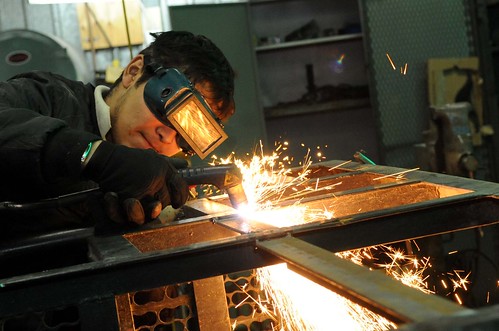Could Vocational Training Solve Unemployment?
The shortage of highly skilled workers became a global concern several years ago and continues to grow despite the emergence of an economic recession. A report compiled by Deloitte for the Manufacturing Industry shows 600,000 jobs in the U.S. need employees who are skilled in various jobs. The number is expected to increase over the next five years, the report states, as many current workers reach retirement age. Many of these careers offer generous pay and immediate employment upon completing vocational school. Shortages are also predicted in health care and other fields.
Why the Lack of Skilled Workers?

This push towards college and away from vocational training contributed to the current shortage of trained, skilled workers in many areas, including healthcare, manufacturing, technology, and other vocational careers. During this same period, many high schools cut vocational classes because of budget constraints.
Manufacturing
A February, 2012, article published in the Washington Post illustrates the critical need for trained workers in the manufacturing industry. One plant in North Carolina waded through more than 2,000 employment applications to fill 50 openings and discovered only 10 percent of the candidates were qualified for jobs, the newspaper reported. In some areas, machinists make more money than graduates who design the equipment. The number of manufacturing jobs needing employees more than doubled over the past year. Vocational classes prepare students to fill these positions. Some skilled factory workers make up to $46,000 a year, the U.S. Department of Labor reports.
Health Care
As the U.S. population ages, the demand for health care workers is expected to rise. Two-year vocational training programs can prepare students to become a licensed practical nurse or licensed vocational nurse. While holding down a job, these professionals can continue their education to become registered nurses, who make between $47,700 and $69,800 annually, according to the labor department. Vocational nurses typically earn $39,000-$53,000 annually. A need has also been identified for respiratory therapists and dental hygienists to fill shortages in these areas.
Other Skilled Jobs
Mechanics make over $40,000 a year using their training and schooling to identify mechanical problems and fix them. Vocational schools train these workers on computerized systems in modern vehicles and technical skills required for the work. Vocational classes might also train students to become heating and air conditioning experts, welders, or plumbers. Many students who complete vocational school begin working for an employer to gain experience before going into business for themselves. They realize the dream of becoming entrepreneurs and serve as their own bosses.
Vocational school represents an alternative to land a good-paying job without fear of layoffs because the need for skilled workers is deemed critical. Many companies currently compete for trained employees and offer higher wages to attract job applicants away from other firms. Once hired, some vocational employees quickly move up to supervisory positions where they earn even more. Most of these job opportunities also offer benefits along with salary, including health insurance and employee-sponsored savings programs.
See Also:
The Fastest Growing Careers of 2012
What is the Real Unemployment Rate?
Networking to Find a Better Job
Choosing a Professional Resume Writing Service
The Difference a Degree Makes in Unemployment Levels
10 Awesome Jobs You Can Do From Home
About the Author:
This article was crafted by Roy McClure for the team at concorde.edu; they have a wealth of information on vocational programs, such as increasingly vital LVN programs and other programs as well.
